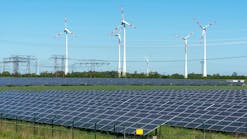The global offshore market has grown by an average of 21% each year since 2013, reaching total installations of 23 GW by the end of 2018. More than 4 GW of new capacity was installed each year in 2017 and 2018, making up 8% of the total new installations during both years. Going forward, the share of new offshore wind capacity will increase up to 10% and higher, according to the Global Wind Energy Council’s (GWEC) Market Outlook.
Based on government targets, auction results, and pipeline data, the GWEC expects to see 190 GW of offshore capacity installed by 2030.
Europe is the leading offshore region with over 18-GW installed capacity by the end of 2018. The GWEC expects Europe to remain a stable and important offshore wind market. A key growth region for offshore wind is Asia. The GWEC expects about 100 GW of offshore capacity to be installed by 2030, China becoming not only the leading Asian country but also a leading global offshore market. Further, the GWEC expects the U.S. offshore market to take off with 1 GW to 2 GW of annual capacity starting around 2022/2023.
But there is more potential to increase the capacity of the global offshore wind market. Many new countries are preparing to join the offshore wind revolution. This not only includes India, but also markets, such as Brazil, which are currently investigating the opportunities of offshore wind. Further, floating offshore wind represents a game-changing technological development that can add even more volume in the years to come. Current high activity level with pilot projects indicates the technology taking a path to become a mainstream and competitive foundation technology. In addition, the GWEC expects the governments of existing offshore markets to increase their targets and volumes toward 2030.
Based on these three aspects, the GWEC sees an upside potential of over 220 MW by 2030.
The industry is continuing to make significant strides on cost-competitiveness, with an average levelized cost of electricity (LCOE) of US$50/MWh being within reach. For global reach of the offshore wind market and to support the creation of a global offshore wind industry, governments and investors must show long term commitment. Project developers, investors, and operators need to adopt to the rapidly evolving technology and the industry needs to create an efficient and global supply chain.
Realizing the potential and benefits means a collective effort to continue to reduce costs in all areas, such as technology, financial solutions, and project planning, and to solve challenges in an effective and efficient manner, utilizing the pre-existing deep experience of the offshore industry.


